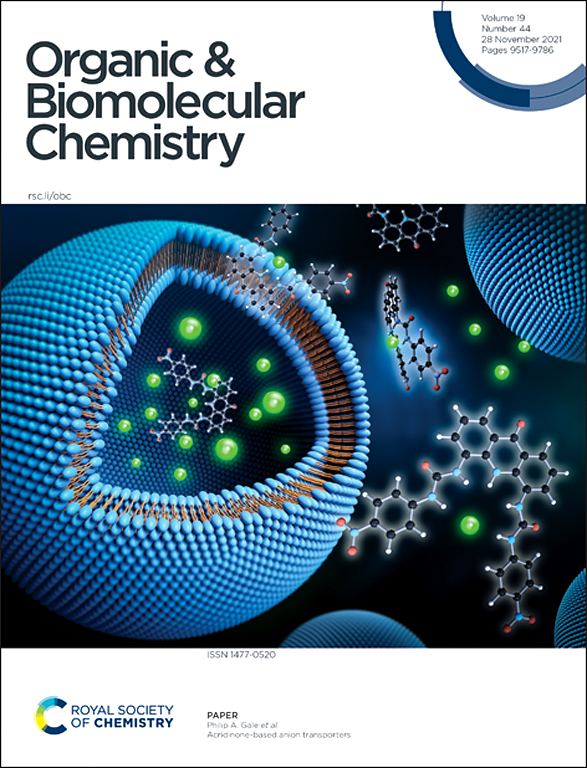Visible-light-driven catalyst-free C–S cross-coupling of thiol derivatives and aryl halides†
IF 2.7
3区 化学
Q1 CHEMISTRY, ORGANIC
引用次数: 0
Abstract
A mild, scalable, and high-yielding visible-light-promoted C–S cross-coupling between alkyl thiol derivatives and (hetero)aryl halides without the need for metals, ligands, or photocatalysts is reported, offering advantages over traditional C–S bond forming strategies. The formation of an electron donor–acceptor (EDA) complex is supported by experimental and computational mechanistic studies, which undergoes visible-light-induced charge transfer to initiate C–S bond formation in the absence of a photoredox catalyst.

硫醇衍生物与芳基卤化物的可见光驱动无催化剂 C-S 交叉偶联。
据报道,在烷基硫醇衍生物和(杂)芳基卤化物之间存在一种温和、可扩展和高产的可见光促进的 C-S 交叉偶联,无需金属、配体或光催化剂,与传统的 C-S 键形成策略相比具有优势。实验和计算机理研究支持电子供体-受体(EDA)复合物的形成,该复合物在没有光氧化催化剂的情况下经历可见光诱导的电荷转移来启动 C-S 键的形成。
本文章由计算机程序翻译,如有差异,请以英文原文为准。
求助全文
约1分钟内获得全文
求助全文
来源期刊

Organic & Biomolecular Chemistry
化学-有机化学
CiteScore
5.50
自引率
9.40%
发文量
1056
审稿时长
1.3 months
期刊介绍:
Organic & Biomolecular Chemistry is an international journal using integrated research in chemistry-organic chemistry. Founded in 2003 by the Royal Society of Chemistry, the journal is published in Semimonthly issues and has been indexed by SCIE, a leading international database. The journal focuses on the key research and cutting-edge progress in the field of chemistry-organic chemistry, publishes and reports the research results in this field in a timely manner, and is committed to becoming a window and platform for rapid academic exchanges among peers in this field. The journal's impact factor in 2023 is 2.9, and its CiteScore is 5.5.
 求助内容:
求助内容: 应助结果提醒方式:
应助结果提醒方式:


